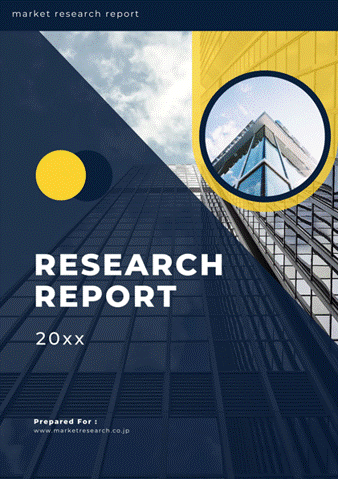 | • レポートコード:D0-MOR-AP0244 • 出版社/出版日:Mordor Intelligence / 2020年3月 • レポート形態:英文、PDF、100ページ • 納品方法:Eメール(受注後2-3営業日) • 産業分類:エネルギー&電力 |
| Single User | ¥629,000 (USD4,250) | ▷ お問い合わせ |
| Team User | ¥703,000 (USD4,750) | ▷ お問い合わせ |
| Corporate License | ¥1,110,000 (USD7,500) | ▷ お問い合わせ |
• お支払方法:銀行振込(納品後、ご請求書送付)
レポート概要
| 本調査レポートは、石炭取引の世界市場について調査・分析した資料で、石炭取引の市場概要、動向、セグメント別市場規模、地域別分析、競争状況、企業情報、市場機会分析などで構成されています。 |
The coal trading market is expected to witness a CAGR of more than 3.2% during the forecast period. Coal is majorly consumed in various sectors, such as industry, transport, residential, commercial and public services, agriculture, fishing, and several non-energy areas that generate the coal demand, leading to trade of coal in between the nations. However, the uses of coal are squeezed out of the energy mix in many developed nations, the reason being the generation of air pollutants due to coal combustion. Moreover, power from coal is getting mixed up with other alternative sources, like renewables and natural gas, which help to reduce the environmental impact as compared to coal. These factors, in turn, are expected to restrain the growth of the coal trading market in the coming years.
– Importers and exporters of coal are the major players in the coal trading business. During 2018, both importer and exporter had an almost equivalent traded quantity of coal of around 858.8 metric ton oil equivalent (Mtoe).
– With the growing demand for electricity, coal power plants in the Asia-Pacific region is expected to be a significant consumer of coal. The region is expected to have a demand of around 4,400 mega ton of coal equivalent (Mtce) by 2040, with majority of demand from the power sector. This demand for coal is expected to create an opportunity for the coal trading market in the future.
– Asia-Pacific was dominating the coal trading market with China and India as the major importer, and Australia and Indonesia as the major exporter of coal during the year 2018. Furthermore, Asia-Pacific imports 73% and exports 60% of the total traded coal in the world.
Key Market Trends
Importer and Exporter to Maintain an Equal Share in the Market
– The coal trading market is primarily operated by importer and exporter that enable to meet the demand of coal in various regions of the world. Around 12 major importers and 12 major exporters are present that run the coal trading market.
– During 2018, both importer and exporter accounted for an equal market share. China, India, Japan, and Europe are the major importers of coal, while Russia, Australia, and Indonesia are the major exporters.
– Europe was the highest importer of coal during 2018, with around 17.4% market share, while China had around 17.1% market share.
– Australia was the highest exporter of coal during 2018, with 29% market share, while Indonesia and Russia had around 16% and 25% market during the year.
– With the rising demand of coal, especially in the Asia-Pacific region, it is expected that, by 2025, the global demand of coal is likely to be nearly 5,000 mtce. Europe and North America are expected to reduce the coal consumption, but Asia-Pacific is expected to remain dominated by coal as a major source of power.
Asia-Pacific is Dominating the Market
– The Asia-Pacific region is the major coal trader around the world that continues to trade a significant percentage of coal from the last few decades. With major coal-dependent countries, Asia-Pacific has the highest rate of imported market share.
– Electricity generation from coal, which is the major sector of coal demand in China and India, makes the region the highest dominating market in the world.
– Moreover, Australia and Indonesia are the highest producers of coal in the Asia-Pacific region that exports the highest volume of coal. During 2018, Australia and Indonesia cumulatively produced more than 1,000 metric ton of coal, of which, it traded nearly 450 Mtoe of coal.
Competitive Landscape
The coal trading market is partially consolidated. Some of the key players in the coal trading market include Glencore PLC, Vitol Holding BV, Trafigura Group Pte Ltd, Mercuria Energy Group, Hind Energy and Coal Beneficiary India limited, China Shenhua Energy Company Limited, China Coal Energy Company Limited, and Mitsubishi Corporation RtM Japan Ltd.
Reasons to Purchase this report:
– The market estimate (ME) sheet in Excel format
– 3 months of analyst support
1 INTRODUCTION
1.1 Scope of the Study
1.2 Market Definition
1.3 Study Assumptions
2 EXECUTIVE SUMMARY
3 RESEARCH METHODOLOGY
4 MARKET OVERVIEW
4.1 Introduction
4.2 List of Coal Importing and Exporting Countries by Quantity, 2019
4.3 Coal Trading Forecast in USD billion, till 2025
4.4 Recent Trends and Developments
4.5 Government Policies and Regulations
4.6 Market Dynamics
4.6.1 Drivers
4.6.2 Restraints
4.7 Supply Chain Analysis
4.8 Porter’s Five Forces Analysis
4.8.1 Bargaining Power of Suppliers
4.8.2 Bargaining Power of Consumers
4.8.3 Threat of New Entrants
4.8.4 Threat of Substitute Products and Services
4.8.5 Intensity of Competitive Rivalry
5 MARKET SEGMENTATION
5.1 Coal Type
5.1.1 Steam Coal
5.1.2 Coaking Coal
5.1.3 Lignite
5.2 Traders Type
5.2.1 Importer
5.2.2 Exporter
5.3 Geography
5.3.1 North America
5.3.2 Asia-Pacific
5.3.3 Europe
5.3.4 Middle East & Africa
5.3.5 South America
6 COMPETITIVE LANDSCAPE
6.1 Mergers and Acquisitions, Joint Ventures, Collaborations, and Agreements
6.2 Strategies Adopted by Leading Players
6.3 Company Profiles
6.3.1 Glencore PLC
6.3.2 Vitol Holding BV
6.3.3 Trafigura Group Pte Ltd
6.3.4 Mercuria Energy Group
6.3.5 Hind Energy and Coal Beneficiary India limited
6.3.6 China Shenhua Energy Company Limited
6.3.7 China Coal Energy Company Limited
6.3.8 Mitsubishi Corporation RtM Japan Ltd
6.3.9 Centennial Coal Company Limited
6.3.10 Borneo Coal Trading
7 MARKET OPPORTUNITIES AND FUTURE TRENDS